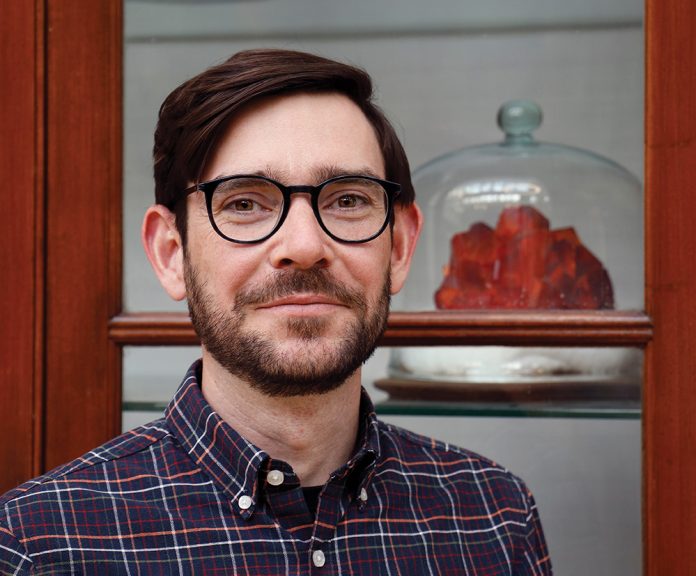As agrichemicals become ever more complex, the need for catalysis is higher. Stephen Thomas, of the University of Edinburgh, has been recently honoured for his research to replace precious and toxic metals with environmentally and physiologically benign metals. These metals also happen to be very inexpensive (by comparison), so suited to large-scale agrichemical production.
Molecular complexity is ever increasing across the breadth of chemical manufacture, from materials to pharmaceuticals and agrichemicals. With this increase in complexity comes the need for chemical transformations to enable this. In an ideal scenario, these transformations would allow the expedient and efficient transformation of simple starting materials into complex building blocks and final targets. Catalysis offers the single most powerful method to enable this by minimising energy and material inputs, while offering established and novel pathways for molecular construction and diversification. Indeed, greater than 80% of manufactured chemical products involve at least one step which uses catalysis – hydrogenation, hydrofunctionalisation and cross-coupling reactions being key examples.
Heterogeneous catalysis dominates bulk chemical manufacture, however where control of 3D complexity, and particularly stereochemistry, are required, homogenous catalysis using precious metals is the ‘go to’ method. While great efficiently and reactivity can be achieved using (enantioenriched) coordination complexes of the platinum group metals (platinum, rhodium, palladium and iridium), the inherent restrictions on physiological and environmental exposure, long-term sourcing and price stability limit the sustainability of these metals. The first-row transition metals, particularly iron, titanium and manganese, offer a highly sustainable alternative.
These metals are Earth-abundant, found across the continents, and have significantly lower daily exposure limits, costs, and environmental impact in terms of both extraction and waste discharging. It therefore begs the questions why do we not use these metals in place of the platinum group counterparts? In short, operational ease. The platinum group metals, and complexes thereof, are generally easy to handle, commercial available (or have precursors which are) and we understand the reactivity patterns of these catalysts. It is not a lack of reactivity that poses the greatest hurdle to the adoption of sustainable metal catalysis, but practicality. One can readily test and apply platinum group metal catalysis, so why spend time and effort making the analogous iron catalyst that is highly air- and moisture sensitive and may not work in the given transformation.
It is this barrier to operational simplicity that the Thomas group have spent the last 10 years trying to break down. Our overarching goal is to make it as easy to reach for an iron or manganese (pre-)catalyst as it is a palladium or rhodium catalyst. By developing methods to enable simple access to and testing of sustainable catalysis manifolds at the earliest stages of development, we hope these methods will trickle down to process development and manufacture – the same way platinum group metal catalysis did decades ago. Over the last 10 years we have developed a number of activation methods for Earth-abundant metal catalysis. In all cases, an activating agent is added to a bench-stable metal complex, the pre-catalyst, to initiate catalysis in the presence of the reagents, under reactions condisions. This negates the need to handle and manipulate the highly air- and moisture sensitive active catalyst, often a low oxidation-state species, but allows simple access to the same catalytic processes. For example an iron-catalysed alkene hydrogenation, which require formally iron(0) catalysts, would be carried out using an air stable iron(II) or iron(III) pre-catalyst and activating agent.
Pre-catalysts activation offers a simple, potentially drop-in means to use Earth-abundant catalysis, but the activating agent must also offer the benefits of sustainability and operational simplicity. Our early activation methods relied on organometallic reagents (Grignard, organolithium and metal hydride reagents), however the flammability of these reagents offered little benefit in terms of operational simplicity. We next developed an alkoxide activation where the salts of simple alcohols could be used in place of organometallic reagents. We were amazed to find that hydrofunctionalisation, hydrogenation and even carbon-carbon bond forming catalysis could all be accessed using alkoxide activation. The bench stable, solid, readily available alkoxide salts offered equal and greater reactivity to that previously limited to highly reducing, highly flammable organometallic activators. Most recently, we have moved beyond the need for an added (exogenous) activating agent. By using specific counterions of the metal(II/III) salts, we have been able to access Earth-abundant metal catalysis without the need for an activating agent. The metal counterion serving this purpose on dissolution. After 10 years we have reached the peak of simplicity. One can now reach for sustainable, Earth-abundant catalysis as easily as the platinum group metal analogues.
Useful links
thomas.chem.ed.ac.uk
blavatnikawards.org/awards/united-kingdom-awards









